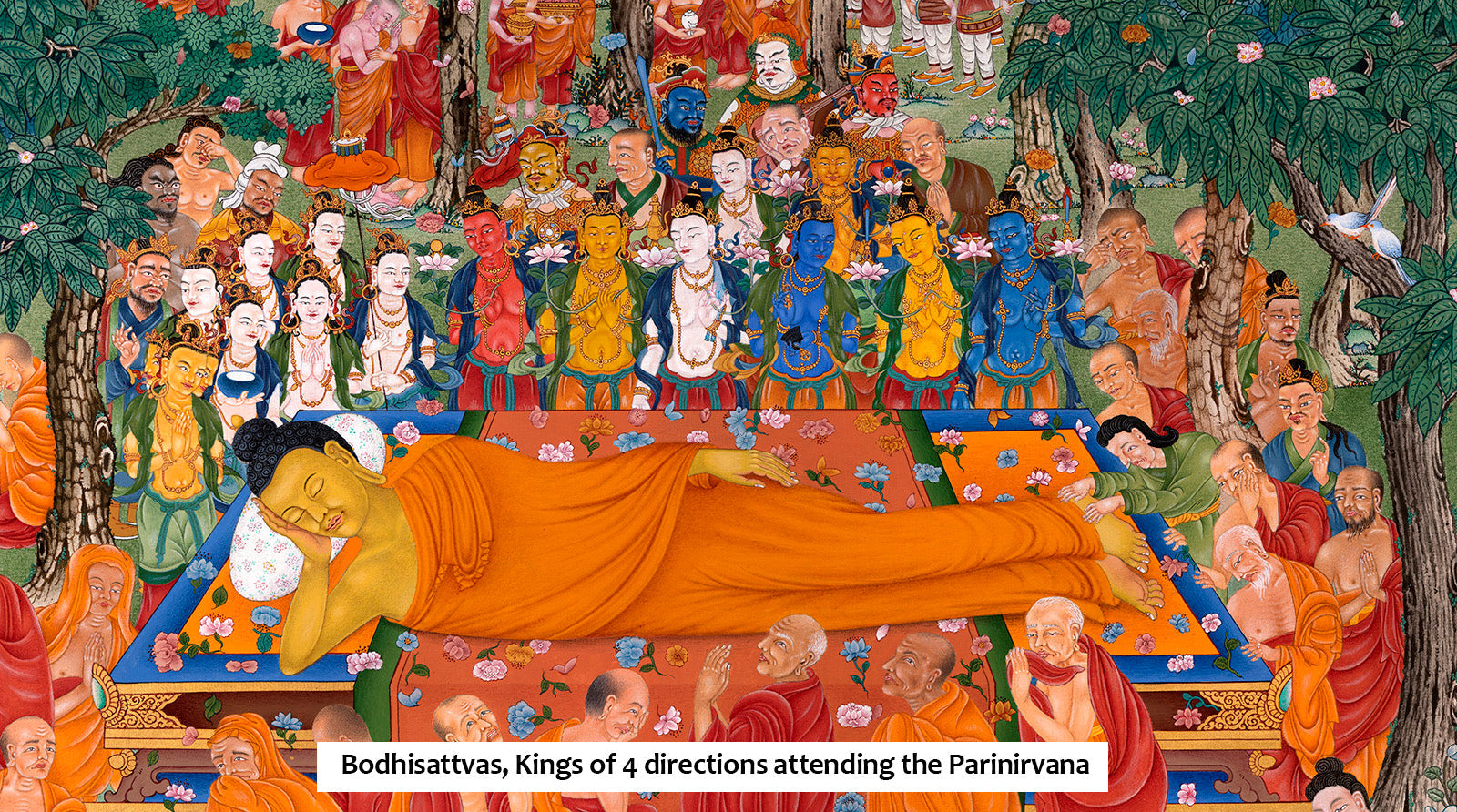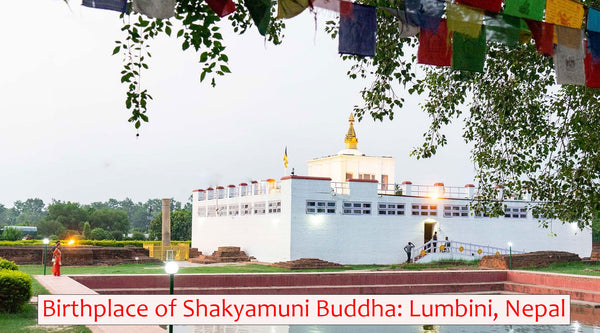The passing away of Buddha Shakyamuni is marked as one of the 12 miraculous deeds of his life. The final liberation of the historical Buddha Shakyamuni is the widely known as the Maha Parinirvana.
What is Parinirvana?
According to the Buddhist doctrine, Parinirvana is the ultimate nirvana which occurs with the death of the physical body of the Enlightened beings. It was the moment when he was finally able to escape the endless cycle of life and death (the Bhava Chakra).
Buddha Shakyamuni passed into his final moments on the Earth while lying down on his right hand, in between two Sala Trees, near the bank of Batsudaiga River, in Kushinagar. He was 80 years’ old when he entered this stage of final cessation on a full moon night.
The final teachings of Shakyamuni Buddha to his disciples:
“All of you monks! You should always single-mindedly and diligently seek the way of liberation. All the moving and unmoving phenomena of the world are all decaying, unfixed appearances. All of you! Here I stop; there is nothing more to say. Time is passing away, and I am about to cross over to Nirvana.”
Who Witnessed the Maha Parinirvana?
To witness this miraculous event, they were present there in numbers. King, his ministers, civil servants, disciples, Gods, goddess, demi gods, bodhisattvas were the ones to attend. Even the beings from the animal realms were moaning at that moment to see such a historical Shakyamuni attaining Nirvana. One such special witness was Shakyamuni’s own mother Maya. She descended from the sky over the clouds to observe such magical moment. 
In the midst of the woods, as Shakyamuni rested, many heavenly gods and goddesses offered flowers and performed songs and dances to bid him goodbye. The whole forest was covered beautifully with the raining blossoms from the sky. The group of monks, kings, and their attendants, ministers are seen weeping and bowing down in prostration.
They all are making offerings of corals, jewels, flowers, perfumes, and silk to Shakyamuni, pleading to him to not leave the world. And in response, he said:
“Now monks, I declare you:
All conditioned things are of a nature to decay
Strive on untiringly”
All of the beings who were there to bid a goodbye to the Shakyamuni, were sobbing, crying and expressing their immense distress. Amongst them, was a disciple named Subhadra who was peacefully seated facing him, without a single hint of sadness or grief in his face. This comprehends that Subhadra clearly understood that this passing away of his master was not a tragic end but a moment of great liberation.
In the back row behind the Shakyamuni were the Bodhisattvas, lined up in a row who fully understand that all beings that are born, will eventually die, and that the goal is the release from samsara.
Depiction of Parinirvana in Thangka:
One of the exclusively painted thangka from our Enlightenment Studio, this Parinirvanana thangka in itself is one of a kind, depicting the historical event of Shakyamuni’s life.
Painted in the large canvas of 40x50 inches, it took us about a year to finally complete this master piece. The great assembly of beings from kings, to servants, gods, demi gods, animals, bodhisattvas, monks are depicted clearly, expressing their grief in various ways.
Buddha Shakyamuni depicts the utter calmness as he lies down on his right hand. Portrayed in the midst of a huge gatherings, his surreal and peaceful expression remains as the highlight of the thangka.
The lustrous green-shade of the Forest of Sala trees, is the result we achieved by mixing the rich mineral colors from blue Azurite and Green Malachite. Similarly, the dark reds (mostly used in monks’ robes) are from the shiny red crystal called Cinnabar stone. All the shades of yellow, browns, black and blue colors were carefully selected to compliment the vibrantly dominating shade of Greens and reds. Natural stone colors undoubtedly produce the subtlest and soothing tones. This is why, these stone colors were our first choice to paint this thangka with, that will justify this miraculously surreal event.
To further enhance this thangka, we have used the pure 24K gold on a plenty of the areas (gods, offering goddess, Bodhisattvas and other background elements). Using gold on thangka is a traditional approach which not only adds up the visual richness but also symbolizes the precious offering to the Tri-Ratna (The Three Jewels)



1 comment
Ejo McMullen
Hello,
Do you have a thangka of Shakyamuni Buddha’e Parinirvana that is possible to purchase?
Thank you for any information.
With palms together,
Ejo